Vietnam is a captivating destination with a rich cultural heritage, diverse landscapes, and vibrant cities. Each city offers unique attractions and experiences, making it difficult to choose where to visit. Here, we explore the top 15 best tourist cities in Vietnam that you should not miss, perfect for any travel itinerary.
Hanoi – Capital of Vietnam’s historical relics
Hanoi, the capital city of Vietnam, is steeped in over a thousand years of history. Founded in 1010 by Emperor Ly Thai To, the city has been the political, cultural, and historical heart of Vietnam. Hanoi’s Old Quarter, with its narrow streets and ancient temples, reflects its long history, while the French colonial architecture adds a European charm to the city.
Why choose Hanoi for your trip
Hanoi is one of the best cities to visit in Vietnam for its blend of old and new. The city offers a wealth of cultural and historical sites, including Hoan Kiem Lake, the Old Quarter, Ho Chi Minh Mausoleum, the Temple of Literature, and the Hanoi Opera House. Hanoi is a city worth visiting if you want to learn about Vietnamese culture and explore numerous historical relics from feudal Vietnam.
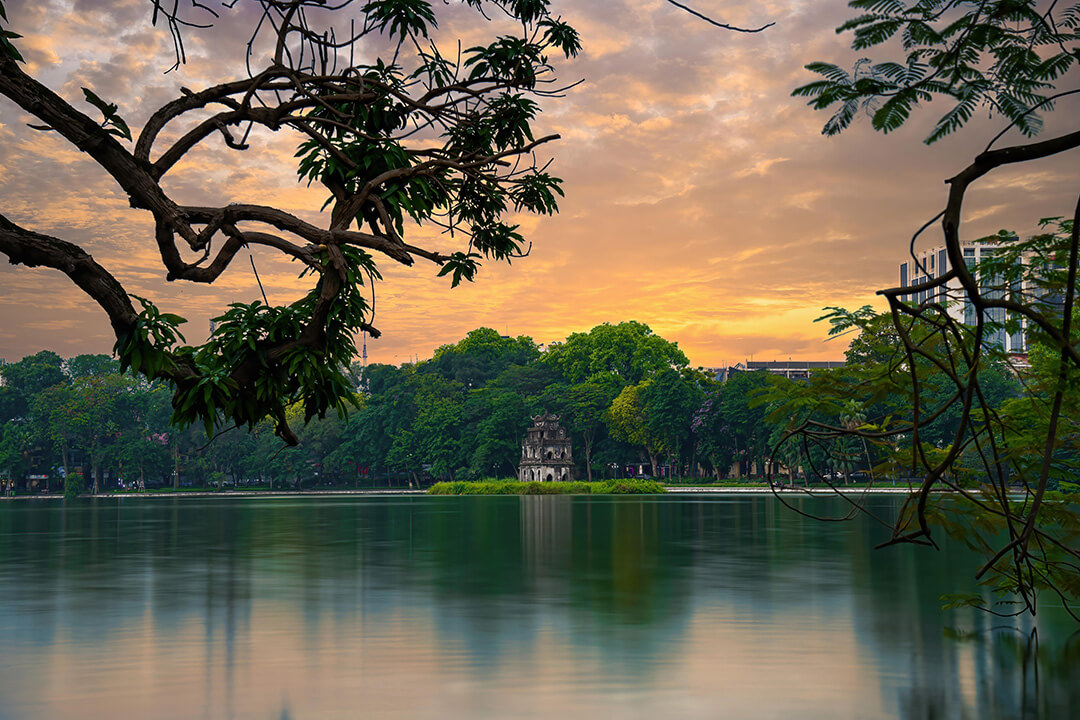
Hoi An – A particularly attractive heritage city
Hoi An, a UNESCO World Heritage Site, was a major trading port from the 15th to the 19th century. Its strategic location along the Thu Bon river made it a hub for international trade, attracting merchants from Japan, China, and Europe. The city’s architecture reflects these influences, with well-preserved wooden houses, temples, and bridges.
Why choose Hoi An for your journey
Hoi An’s enchanting lantern-lit streets and rich cultural heritage make it one of the most attractive cities in Vietnam. Top attractions include the Japanese Covered Bridge, the Ancient Town, Hoi An night market, and the bustling tailor shops where you can get custom-made clothes. Hoi An offers a charming glimpse into Vietnam’s past and a serene atmosphere for relaxation.
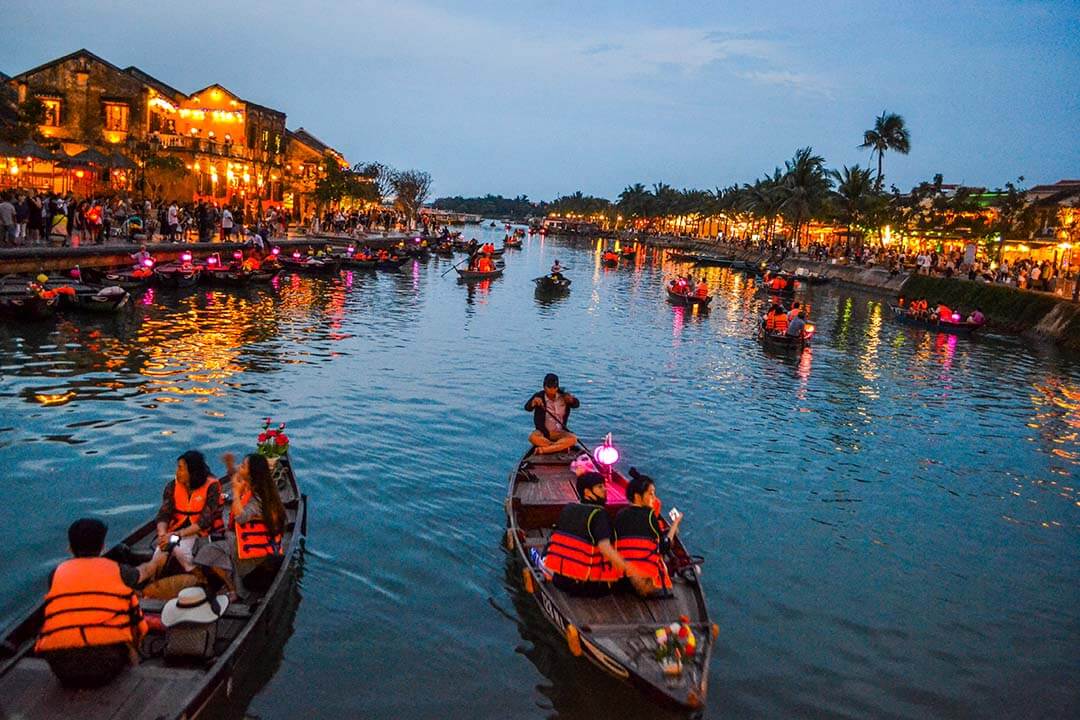
Ho Chi Minh city – TOP city in Vietnam
Ho Chi Minh City, formerly known as Saigon, is Vietnam’s largest city and a dynamic economic hub. It has a complex history, from its days as a Khmer trading port to its pivotal role during the Vietnam War. The city’s history is reflected in its architecture, with French colonial buildings standing alongside modern skyscrapers.
Why choose Ho Chi Minh city for your tourist
Ho Chi Minh City is vibrant and bustling, known for its war relics, dynamic nightlife, and delicious food. Key attractions include Notre Dame Cathedral, the War Remnants Museum, and Ben Thanh Market. The city is a blend of old and new, offering insights into Vietnam’s past and a glimpse into its future.
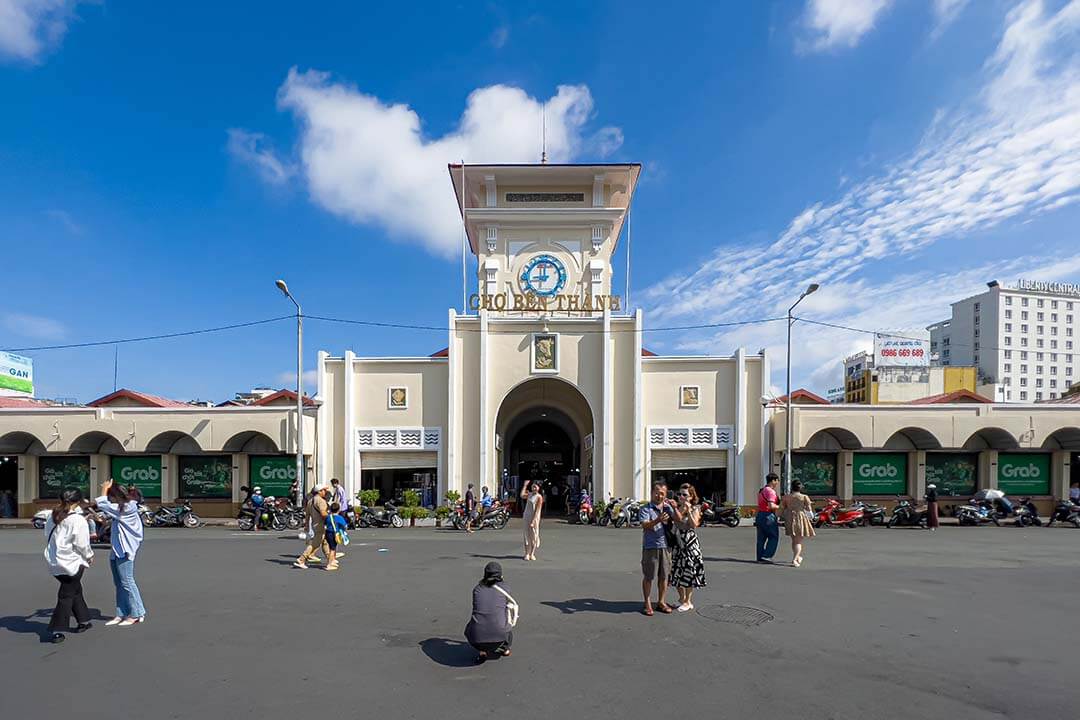
Choose Hanoi or Saigon?
Choosing between Hanoi and Saigon depends on your interests. Hanoi offers a more traditional and historical ambiance, while Ho Chi Minh City provides a lively, cosmopolitan experience. Both cities are among the best cities to visit in Vietnam.
Hue – Ancient capital city
Hue was the imperial capital of Vietnam during the Nguyen Dynasty from 1802 to 1945. The city’s history is marked by its impressive imperial architecture, including the grand Imperial City, royal tombs, and ancient temples.
Why choose Hue for your trip
Imperial history: Hue served as the imperial capital of Vietnam under the Nguyen dynasty from 1802 to 1945. It was the political, cultural, and religious center of the country during this period, showcasing rich traditions and historical significance.
Imperial City: The Imperial City of Hue, a UNESCO World Heritage site, is a sprawling complex within the Citadel. It features impressive structures such as the Purple Forbidden City, halls, pavilions, and gates that reflect traditional Vietnamese architectural styles.
Thien Mu pagoda: This iconic seven-story pagoda, situated on the Perfume River, is not only a religious site but also a symbol of Hue. It offers panoramic views of the surrounding countryside and provides insight into Vietnamese Buddhist practices.
Nguyen emperors’ tombs: Hue is renowned for its elaborate royal tombs scattered along the banks of the Perfume River and surrounding hills. Each tomb is unique in its design and reflects the personality and achievements of the respective Nguyen emperor buried there.
Cultural heritage: Beyond its architectural marvels, Hue boasts a vibrant cultural scene with traditional music, dance, and cuisine that have been preserved through generations, offering visitors a glimpse into Vietnam’s rich cultural tapestry.
Serene environment: Unlike bustling urban centers, Hue offers a tranquil atmosphere, perfect for those seeking a peaceful retreat amidst historical grandeur and natural beauty. The Perfume River, lush gardens, and quiet pagodas contribute to its serene charm.
Accessibility: Located in central Vietnam, Hue is easily accessible by road, rail, and air, making it a convenient stop for travelers exploring the country’s cultural and historical landmarks.

Nha Trang – Pearl of the East sea
Nha Trang has a rich history as a significant port city dating back to the Cham civilization. Over the centuries, it has developed into a modern coastal city known for its beautiful beaches and vibrant nightlife.
Why choose Nha Trang for your trip
Beautiful beaches: Nha Trang is renowned for its pristine beaches with soft, golden sands and clear turquoise waters, ideal for swimming, sunbathing, and beach activities. Bai Dai Beach, in particular, offers a more secluded and tranquil atmosphere compared to the bustling main beach.
Water sports paradise: The city is a haven for water sports enthusiasts, offering opportunities for snorkeling, scuba diving, jet skiing, and parasailing. The diverse marine life and coral reefs make it a popular destination for underwater exploration.
Vinpearl land: Located on Hon Tre Island, Vinpearl Land is a world-class entertainment complex accessible by a scenic cable car ride over the bay. It features an amusement park with thrilling rides, a water park, a shopping mall, and a golf course, providing entertainment for visitors of all ages.
Cultural attractions: Beyond its coastal attractions, Nha Trang boasts cultural landmarks such as the Po Nagar Cham Towers, ancient temples dedicated to the Cham civilization. These towers offer insights into Vietnam’s rich history and architectural heritage.
Local cuisine: Visitors can indulge in fresh seafood delicacies and traditional Vietnamese cuisine at local eateries and restaurants along the coastline. Nha Trang is famous for its seafood dishes prepared with locally sourced ingredients.
Relaxing atmosphere: While Nha Trang offers vibrant nightlife and bustling markets, it also provides opportunities for relaxation and rejuvenation. Spa resorts and wellness centers offer traditional Vietnamese treatments, massages, and yoga classes overlooking the sea.
Accessibility: Situated on Vietnam’s central coast, Nha Trang is easily accessible by air, train, and road transport, making it a convenient destination for both domestic and international travelers.
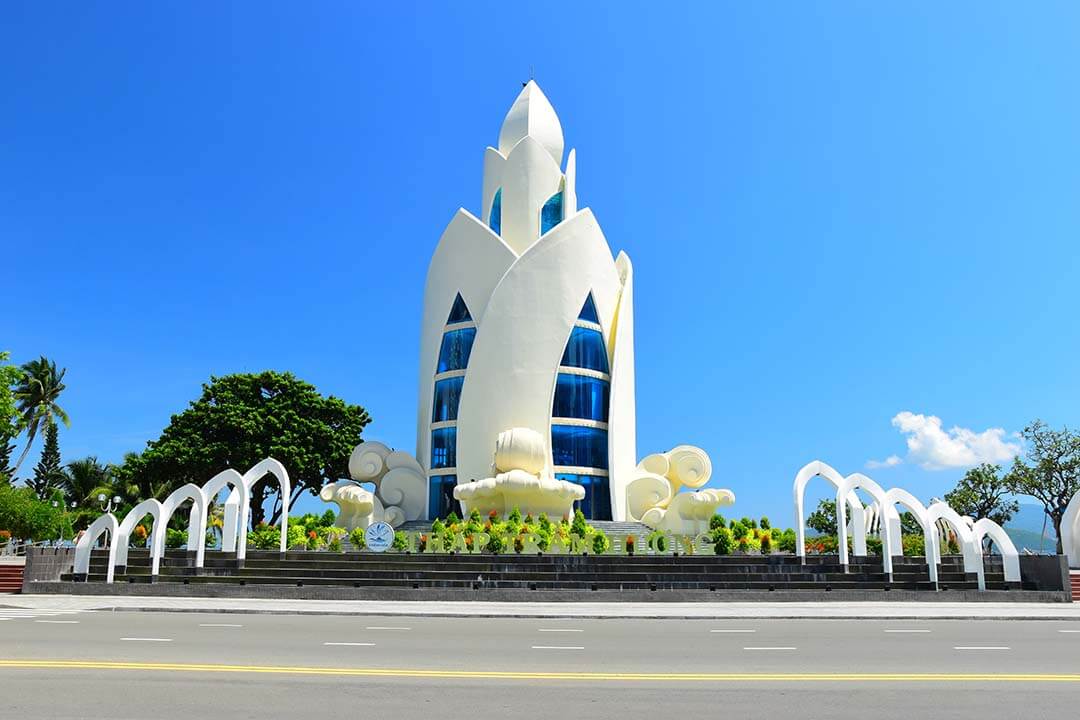
These points highlight Nha Trang as an ideal destination for travelers seeking a blend of beach relaxation, water sports adventure, cultural exploration, and culinary delights in Vietnam.
Ninh Binh – The cradle of Xam singing
Ninh Binh, known for its stunning natural landscapes, also holds historical significance. It was the capital of Vietnam during the Dinh and Le dynasties in the 10th and 11th centuries. The area is rich in historical sites, including ancient temples and pagodas.
Why choose Ninh Binh for your trip
Scenic beauty: Ninh Binh is renowned for its breathtaking natural landscapes characterized by limestone karsts, lush green rice paddies, and winding waterways. The Trang An Scenic Landscape Complex and Tam Coc-Bich Dong are prime examples, offering boat tours through serene river valleys surrounded by towering cliffs.
Cultural heritage: The region is steeped in history and cultural significance, evident in its ancient temples, pagodas, and historical sites. Hoa Lu Ancient Capital, the former capital of Vietnam in the 10th and 11th centuries, features impressive architecture and relics from the Dinh and Early Le dynasties.
Bai Dinh pagoda: As the largest complex of Buddhist temples in Vietnam, Bai Dinh Pagoda showcases grand architecture, intricate statues, and peaceful surroundings amidst scenic mountains. It’s a significant religious site attracting pilgrims and tourists alike.
Cuc Phuong national park: Located nearby, Cuc Phuong is Vietnam’s first national park and home to diverse flora and fauna. It offers opportunities for trekking, birdwatching, and exploring ancient caves adorned with prehistoric fossils and archaeological remnants.
Authentic rural life: Ninh Binh offers a glimpse into authentic rural Vietnam with its charming villages, traditional stilt houses, and friendly locals. Visitors can experience local hospitality, sample regional cuisine, and participate in agricultural activities such as rice planting or cycling through picturesque countryside.
Accessibility: Situated south of Hanoi, Ninh Binh is easily accessible by road or train, making it a convenient day trip or overnight destination from the capital city. The journey itself offers scenic views of the Vietnamese countryside.
Tranquil ambiance: Unlike bustling urban centers, Ninh Binh provides a peaceful ambiance ideal for relaxation and connecting with nature. It’s a serene retreat for travelers seeking a quieter, more reflective experience away from crowded tourist spots.
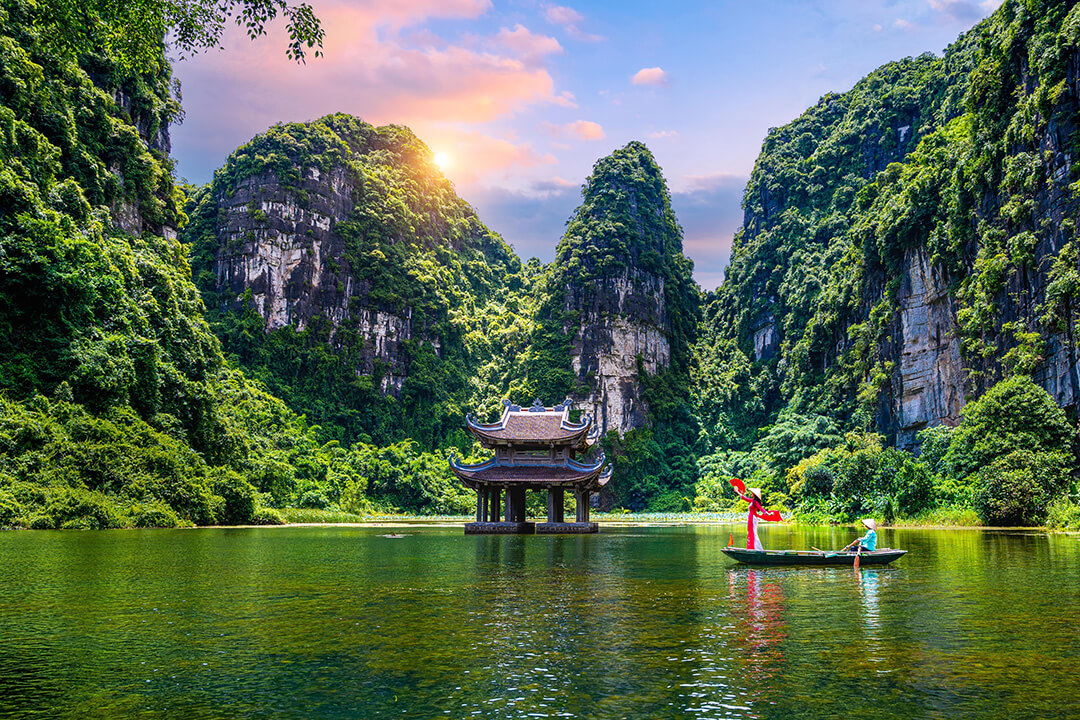
Dalat – The flowers city
Dalat was established by the French in the early 20th century as a hill station to escape the tropical heat. Its cool climate and beautiful scenery made it a popular retreat for the French colonialists and later for tourists.
Why choose Dalat for your trip
Scenic beauty: Dalat, often called the “City of Eternal Spring,” boasts stunning natural landscapes with mist-shrouded valleys, pine forests, and rolling hills. The cool climate and lush vegetation make it a refreshing retreat from Vietnam’s tropical heat.
French colonial influence: Dalat showcases remnants of its French colonial past through its architecture, including charming villas, churches, and public buildings. The city’s layout and gardens reflect French planning aesthetics, adding to its unique character.
Xuan Huong lake: This picturesque lake is a central feature of Dalat, offering scenic views, pedal boat rides, and leisurely walks along its shores. It’s a popular spot for locals and visitors alike to relax and enjoy the tranquil surroundings.
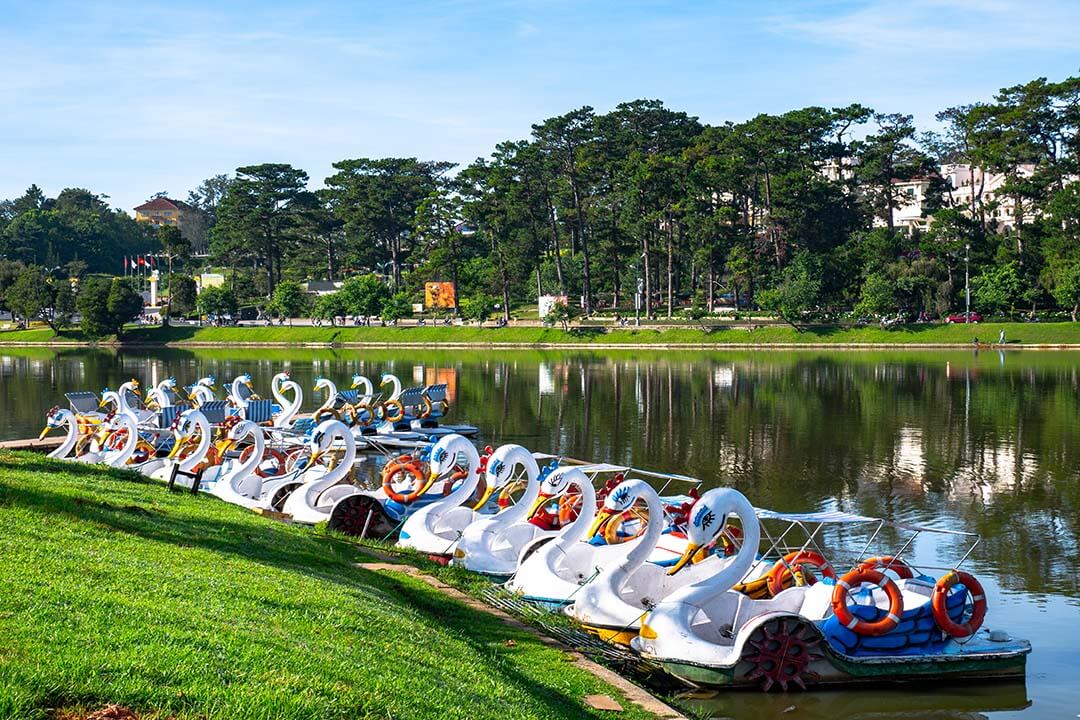
Dalat flower park: Known for its vibrant floral displays, Dalat Flower Park showcases a wide variety of colorful blooms, including roses, orchids, and hydrangeas. It’s a paradise for flower enthusiasts and photographers, particularly during the annual flower festivals.
Outdoor activities: Dalat is an ideal destination for outdoor enthusiasts, offering activities such as hiking, mountain biking, and exploring waterfalls like Datanla and Pongour. The surrounding countryside is dotted with tea and coffee plantations, adding to the scenic charm.
Romantic atmosphere: With its cool climate, scenic vistas, and peaceful ambiance, Dalat is perfect for couples seeking a romantic getaway. The city’s gardens, lakeside cafes, and cozy accommodations cater to a relaxed and intimate experience.
Cultural experiences: Visitors can immerse themselves in local culture by visiting ethnic minority villages, exploring traditional markets, and sampling Dalat’s distinctive cuisine, known for its fresh produce and unique flavors.
Accessibility: Dalat is accessible by road or air from major cities like Ho Chi Minh City and Hanoi, making it a convenient destination for both domestic and international travelers looking to explore Vietnam’s central highlands.
These attributes make Dalat a charming and versatile destination, appealing to nature lovers, culture enthusiasts, and those seeking a peaceful retreat in Vietnam
Sa Pa – Foggy town of Vietnam
Sa Pa was established as a hill station by the French in the early 1900s. It is known for its ethnic diversity and stunning terraced rice fields. The town has grown into a popular destination for trekking and cultural experiences.
Why choose Sa Pa for your trip
Trekking and adventure: Sa Pa is renowned for its trekking opportunities, particularly to Fansipan Mountain, the highest peak in Indochina. Treks range from moderate to challenging, offering stunning panoramic views of lush valleys, waterfalls, and ethnic minority villages along the way.
Ethnic minority culture: The region is home to several ethnic minority groups, including the Hmong, Dao, and Tay. Visiting their villages allows travelers to experience traditional customs, handicrafts, and vibrant festivals firsthand, offering insights into Vietnam’s diverse cultural tapestry.
Scenic beauty: Sa Pa’s landscape is characterized by terraced rice fields carved into the mountainsides, creating a picturesque backdrop that changes with the seasons. The foggy ambiance adds to the mystical charm of the region, particularly during the early morning or late afternoon.
Local markets: Sa Pa’s bustling markets, such as Bac Ha Market and Sa Pa Market, are vibrant hubs where ethnic minorities gather to trade goods, livestock, and handicrafts. These markets provide a glimpse into daily life and offer opportunities to purchase unique souvenirs.
Homestay experiences: Staying in a traditional homestay with an ethnic minority family allows travelers to immerse themselves in local hospitality and cuisine. It’s a chance to participate in daily activities like farming, cooking, and learning traditional crafts.
Climate and seasons: Sa Pa’s temperate climate makes it a refreshing escape from Vietnam’s tropical heat. Each season offers unique experiences, from lush greenery in the rainy season to golden rice terraces during the harvest months, making any time of year suitable for a visit.
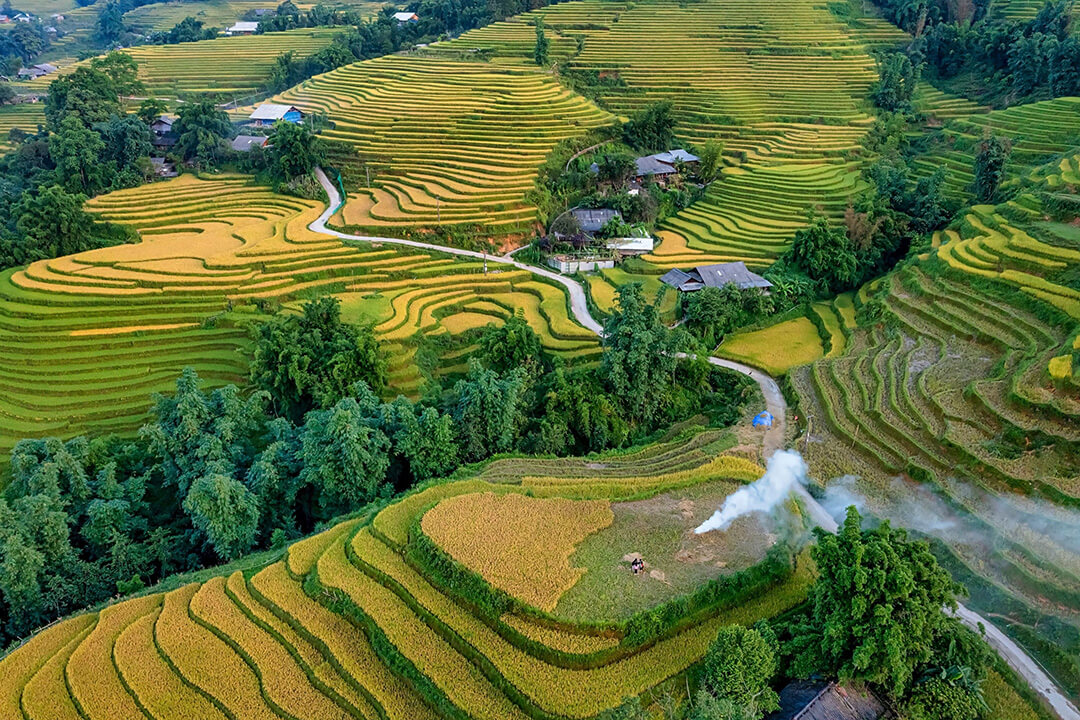
Accessibility: While Sa Pa’s remote location in the northern highlands offers a peaceful retreat, it is accessible by road or train from Hanoi, making it a popular destination for both adventurous travelers and those seeking cultural immersion.
These aspects combine to make Sa Pa a captivating destination for trekking enthusiasts, cultural explorers, and nature lovers looking to experience the authentic beauty and diversity of Vietnam’s northern highlands.
Mui Ne – Tourist paradise
Mui Ne, once a quiet fishing village, has transformed into a bustling tourist destination. Its history is tied to its coastal and maritime activities, which have shaped its development into a popular beach resort.
Why choose Mui Ne for your trip
Mui Ne beach: The long stretch of Mui Ne Beach is ideal for sunbathing, swimming, and water sports such as kite surfing and wind surfing. The consistent wind conditions make it a haven for enthusiasts seeking adrenaline-pumping activities on the water.
Fishing village: Mui Ne retains its traditional fishing village charm, where visitors can witness colorful fishing boats returning with their catch and experience the local way of life. Fresh seafood restaurants along the coast offer delicious meals with ocean views.
Mui Ne harbor: The harbor is a bustling hub where fishermen bring in their daily hauls, providing a glimpse into the local fishing industry. It’s also a starting point for boat trips to nearby attractions such as Hon Rom Island and the Phu Quy Island archipelago.
Relaxed atmosphere: Compared to larger Vietnamese cities, Mui Ne offers a more relaxed and laid-back atmosphere, making it a perfect destination for travelers seeking a tranquil beach getaway with plenty of natural beauty.
Mui Ne sand sculpture park: This unique park features intricate sand sculptures created by artists from around the world. It’s a fascinating place to explore and appreciate the creativity and craftsmanship displayed in each sculpture.
Sand dunes: Mui Ne is famous for its stunning sand dunes, including the Red Sand Dunes and White Sand Dunes. These natural formations offer spectacular views, especially during sunrise and sunset, and are popular spots for photography and sandboarding.

Accessibility: Located about 4-5 hours by road from Ho Chi Minh City, Mui Ne is easily accessible for a weekend getaway or a longer stay, offering a convenient escape from the bustling urban environment.
These aspects make Mui Ne a desirable destination for adventure seekers, beach lovers, and anyone looking to unwind amidst Vietnam’s natural beauty and coastal charm.
Pleiku – Mountain town
Pleiku, located in the Central Highlands, has a rich cultural heritage tied to the indigenous ethnic groups. It played a significant role during the Vietnam War and has since developed into a serene mountain town.
Why choose Pleiku for your trip
Highland culture: Pleiku provides a unique opportunity to experience the culture of Vietnam’s Central Highlands. The region is home to various ethnic minority groups, including the Bahnar, Jarai, and Gia Rai, each with their own traditions, rituals, and crafts.
T’Nung lake: Also known as Bien Ho (Sea Lake), T’Nung Lake is a picturesque volcanic crater lake surrounded by lush forests and rolling hills. It offers opportunities for boating, picnicking, and enjoying the serene natural beauty of the highlands.
Ethnic villages: Visiting ethnic minority villages near Pleiku allows travelers to immerse themselves in traditional customs, music, and cuisine. Homestay experiences offer insights into daily life and agricultural practices, providing a deeper understanding of the local culture.
Kon Chu Rang nature reserve: Located nearby, this nature reserve is home to diverse wildlife, including rare bird species and exotic flora. It’s an ideal destination for nature enthusiasts interested in hiking, birdwatching, and exploring pristine ecosystems.
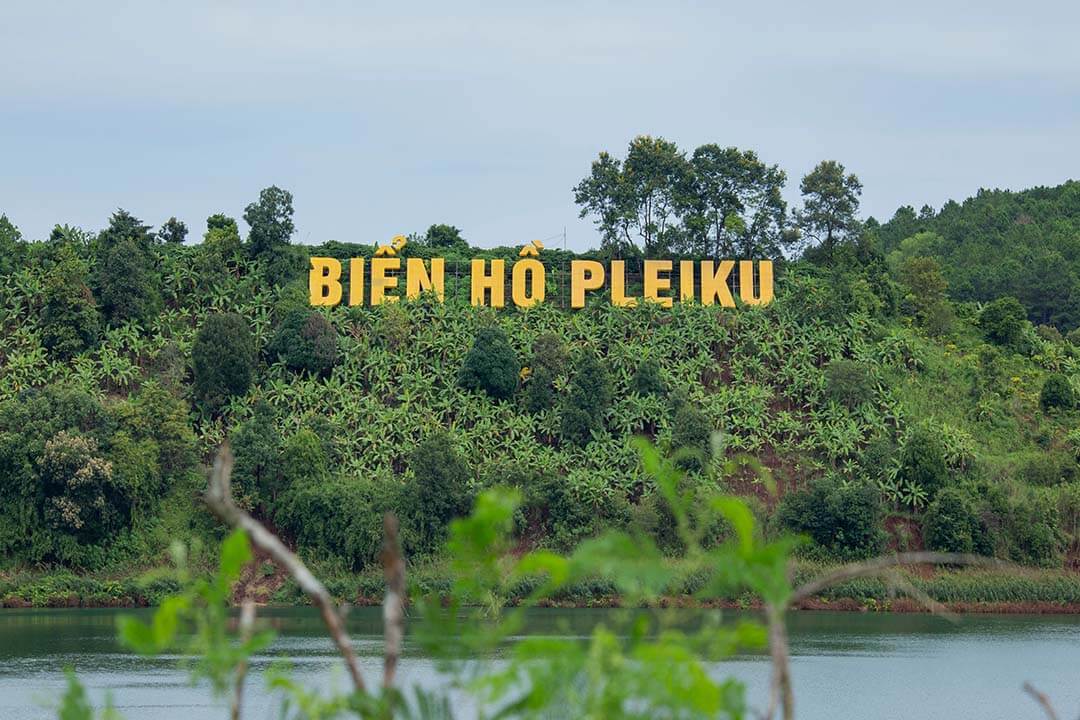
Historical significance: Pleiku has historical significance dating back to the Vietnam War, with remnants such as old airstrips and war memorials that offer insights into the region’s turbulent past and its resilience.
Coffee plantations: The Central Highlands, including Pleiku, are known for their coffee plantations. Visitors can tour coffee farms, learn about the cultivation process, and sample locally grown coffee, known for its rich flavor and aroma.
Tranquil environment: Compared to bustling urban centers, Pleiku offers a tranquil and laid-back atmosphere, perfect for travelers seeking relaxation and a slower pace of life amidst natural beauty and cultural authenticity.
Accessibility: While Pleiku is more off-the-beaten-path compared to some tourist destinations in Vietnam, it is accessible by road or air from major cities like Ho Chi Minh City and Hanoi, making it feasible for adventurous travelers to explore.
These reasons highlight Pleiku as a hidden gem for those interested in exploring Vietnam’s highland culture, natural landscapes, and historical heritage away from the more heavily visited tourist routes.
Ha Giang – Where rocks bloom
Ha Giang is known for its rugged landscapes and ethnic diversity. The region has a long history of cultural heritage, with many ancient customs and traditions still practiced today.
Why choose Ha Giang for your trip
Dramatic landscapes: Ha Giang is renowned for its stunning and rugged landscapes, characterized by towering limestone peaks, deep valleys, and winding roads. The Dong Van Karst Plateau, a UNESCO Global Geopark, showcases unique geological formations and diverse ecosystems.
Ma Pi Leng pass: Known as one of the most spectacular mountain passes in Vietnam, Ma Pi Leng Pass offers breathtaking views of the Nho Que River winding through steep cliffs and valleys below. It’s a must-visit spot for photography enthusiasts and adventure seekers.
Ethnic diversity: Ha Giang is home to numerous ethnic minority groups, including the Hmong, Tay, Dao, and Lo Lo. Visiting local villages allows travelers to experience traditional cultures, customs, and handicrafts, providing a deeper insight into Vietnam’s cultural diversity.
Lung Cu flag tower: Located at the northernmost point of Vietnam, Lung Cu Flag Tower offers panoramic views of the surrounding countryside and neighboring China. It’s a symbol of Vietnamese sovereignty and a historical site worth visiting.
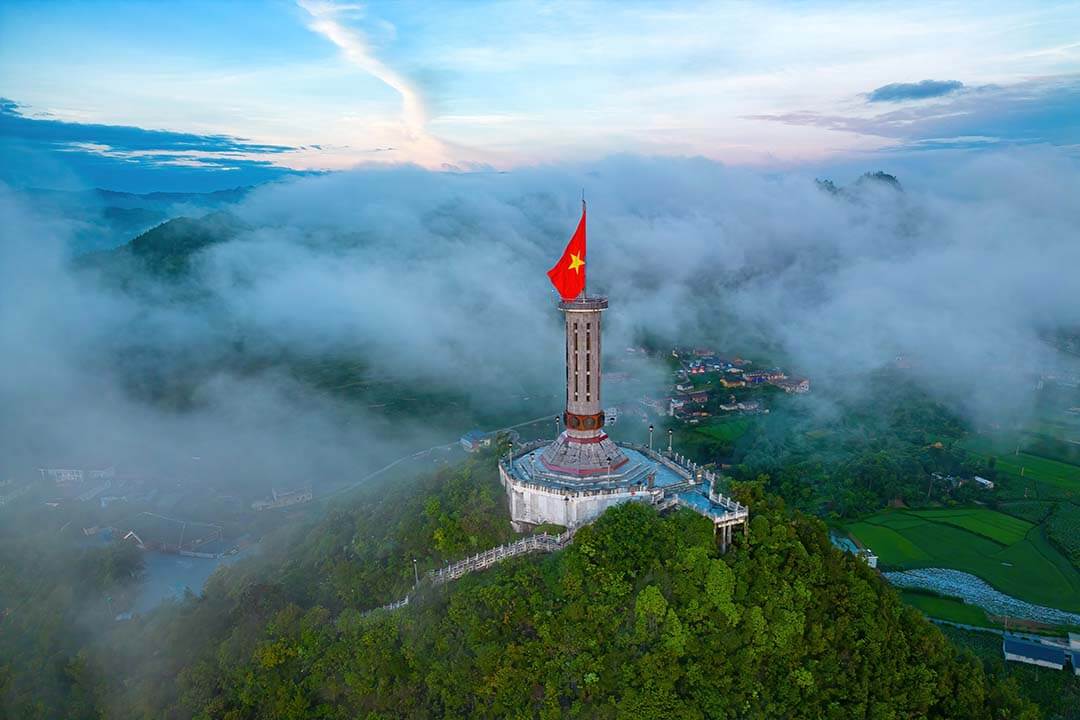
Hiking and trekking: Ha Giang offers excellent opportunities for hiking and trekking through pristine landscapes, rice terraces, and ethnic minority villages. Multi-day treks allow travelers to immerse themselves in nature and experience remote areas off the beaten path.
Local markets: Weekly markets in towns like Dong Van and Meo Vac are vibrant cultural hubs where ethnic minority groups gather to trade goods, livestock, and handmade crafts. These markets provide an authentic glimpse into local life and traditions.
Community-Based tourism: Ha Giang promotes sustainable tourism initiatives, including homestay experiences and community-based tourism projects that benefit local communities economically while preserving cultural heritage and natural resources.
Charming villages: Throughout Ha Giang province, visitors can explore charming villages nestled amidst scenic landscapes, offering opportunities to interact with friendly locals, sample traditional cuisine, and participate in agricultural activities.
Accessibility: While Ha Giang is more remote compared to other tourist destinations in Vietnam, improvements in infrastructure have made it more accessible by road from Hanoi and other major cities, facilitating travel to this scenic region.
These reasons highlight Ha Giang as a destination for adventurous travelers seeking to explore Vietnam’s natural beauty, cultural diversity, and remote landscapes in an authentic and immersive way.
Can Tho – Capital of Western Vietnam
Can Tho, located in the Mekong Delta, is the largest city in the region. It has been an important economic and cultural center for centuries, known for its waterways and floating markets.
Why choose Can Tho for your trip
Mekong Delta experience: Can Tho is the largest city in the Mekong Delta, offering a quintessential experience of delta life and culture. The region is known for its fertile lands, intricate network of waterways, and vibrant floating markets.
Cai Rang floating market: One of the most famous floating markets in the Mekong Delta, Cai Rang Floating Market is a bustling hub where local vendors sell fruits, vegetables, and other goods from their boats. It’s an iconic scene and a must-visit for a glimpse into traditional river trading.

Binh Thuy ancient house: This well-preserved French colonial-era house offers a glimpse into Can Tho’s historical past. The house features a blend of French and Vietnamese architectural styles and is surrounded by lush gardens, making it a tranquil oasis in the city.
Rural landscapes: Beyond the city center, Can Tho offers opportunities to explore the rural landscapes of the Mekong Delta, including rice paddies, orchards, and traditional villages. Cycling or boat tours allow visitors to immerse themselves in the delta’s natural beauty.
Local cuisine: Can Tho is known for its delicious Mekong Delta cuisine, featuring fresh seafood, tropical fruits, and dishes like hu tieu (rice noodle soup) and banh cong (fried shrimp cakes). Visitors can enjoy authentic meals at local eateries and markets.
Cultural experiences: Visitors can engage with local communities through homestay experiences, where they can participate in daily activities such as fishing, farming, and cooking traditional dishes alongside their hosts.
Canal cruises: Exploring Can Tho’s intricate canal system by boat offers a unique perspective on delta life, passing by stilt houses, floating markets, and lush greenery. Sunset cruises on the Hau River are particularly popular for their scenic views.
Accessibility: Can Tho is easily accessible by road or air from Ho Chi Minh City and other major cities in Vietnam, making it a convenient gateway to explore the Mekong Delta and its surrounding attractions.
These aspects make Can Tho a captivating destination for travelers interested in exploring the rich culture, scenic landscapes, and unique way of life in the Mekong Delta region of Vietnam.
Quy Nhon – Poetic city of Vietnam
Quy Nhon has a rich history dating back to the Cham civilization and later became a strategic port during the Vietnam War. The city’s historical significance is reflected in its ancient monuments and cultural heritage.
Why choose Quy Nhon for your trip
Pristine beaches: Quy Nhon boasts some of Vietnam’s most pristine and less crowded beaches, such as Bai Xep Beach and Ky Co Beach. These sandy stretches offer clear turquoise waters, perfect for swimming, snorkeling, and sunbathing in a tranquil setting.
Historical landmarks: Quy Nhon is rich in historical and cultural heritage, with attractions like Banh It Tower. This ancient Cham tower, dating back to the 11th century, showcases intricate architectural details and offers panoramic views of the surrounding countryside.
Ky Co island: Accessible by boat from Quy Nhon, Ky Co Island is renowned for its white sandy beaches, crystal-clear waters, and coral reefs. It’s a paradise for beach lovers and snorkeling enthusiasts seeking a day of relaxation and underwater exploration.
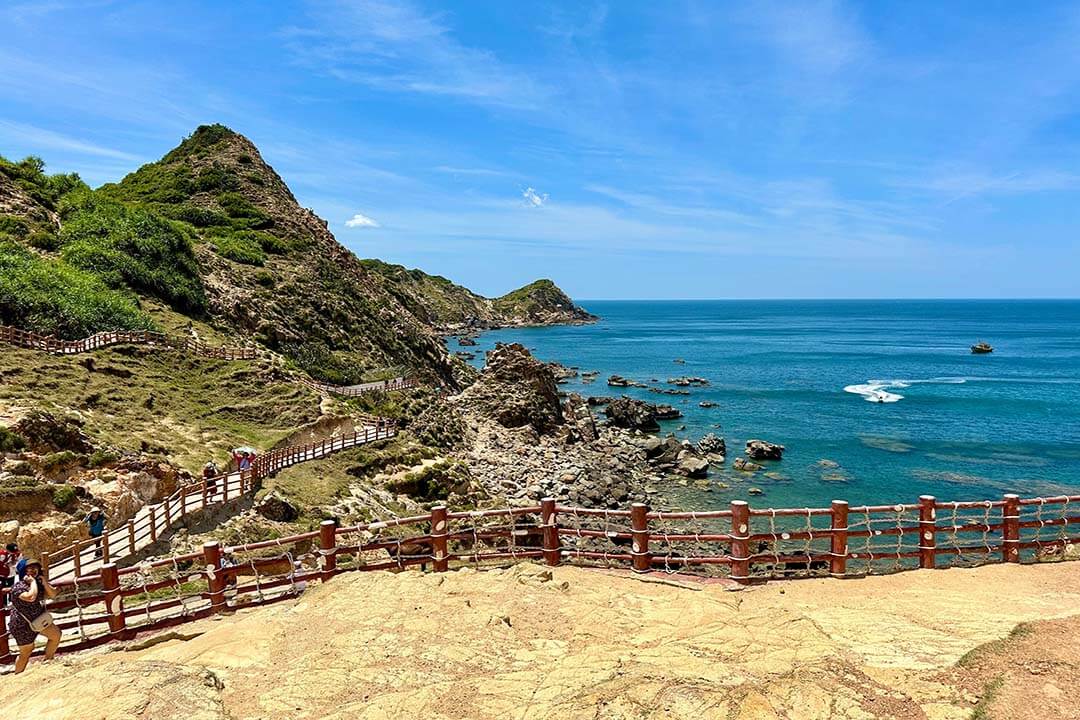
Nui Mot pagoda: Located on a hill overlooking Quy Nhon Bay, Nui Mot Pagoda offers a peaceful retreat with panoramic views of the city and coastline. The pagoda’s architecture and serene atmosphere make it a popular spot for contemplation and photography.
Bai Trung beach: Another picturesque beach near Quy Nhon, Bai Trung Beach is known for its gentle waves, golden sands, and coconut groves lining the shore. It’s an ideal spot for picnics, beach walks, and enjoying the natural beauty of the coastline.
Local cuisine: Quy Nhon is famous for its seafood delicacies, including fresh fish, squid, and scallops. Visitors can savor these dishes at local seafood restaurants along the waterfront, accompanied by stunning sunset views over the bay.
Peaceful atmosphere: Compared to larger Vietnamese cities, Quy Nhon offers a quieter and more relaxed atmosphere, making it an ideal destination for travelers seeking a peaceful retreat by the sea with opportunities for cultural exploration.
Accessibility: Quy Nhon is accessible by road and air, with flights from major cities like Ho Chi Minh City and Hanoi. Its relatively compact size and well-developed tourism infrastructure make it convenient for exploring the region’s attractions.
These reasons showcase Quy Nhon as a charming destination where travelers can enjoy natural beauty, historical landmarks, and a peaceful seaside ambiance in Vietnam.
Hai Phong – Red phoenix flowers city
Hai Phong is a major port city with a history of French colonial influence and significant maritime activity. The city’s development has been shaped by its strategic location and economic importance.
Why choose Hai Phong for your trip
Colonial architecture: Hai Phong features beautiful colonial-era architecture, reflecting its history as a major French trading port. Landmarks like the Opera House, French-built villas, and historical buildings along the waterfront offer glimpses into its colonial past.
Do Son beach: Located just outside Hai Phong, Do Son Beach is a popular seaside retreat known for its gentle waves, sandy shores, and scenic views of nearby islands. It’s ideal for sunbathing, swimming, and enjoying fresh seafood at beachfront restaurants.
Cat Ba island: As part of Halong Bay, Cat Ba Island is accessible from Hai Phong and offers stunning limestone karsts, hidden coves, and hiking trails through Cat Ba National Park. Visitors can explore caves, kayak in emerald waters, and encounter diverse wildlife.
Du Hang pagoda: This ancient Buddhist pagoda in Hai Phong’s city center is renowned for its intricate architecture, serene atmosphere, and historical significance. It’s a peaceful sanctuary amidst the bustling city streets.
Hai Phong museum: Located in a French colonial building, the Hai Phong Museum showcases exhibits on the city’s history, culture, and maritime heritage. It’s a great place to learn about the region’s evolution from ancient times to the present day.
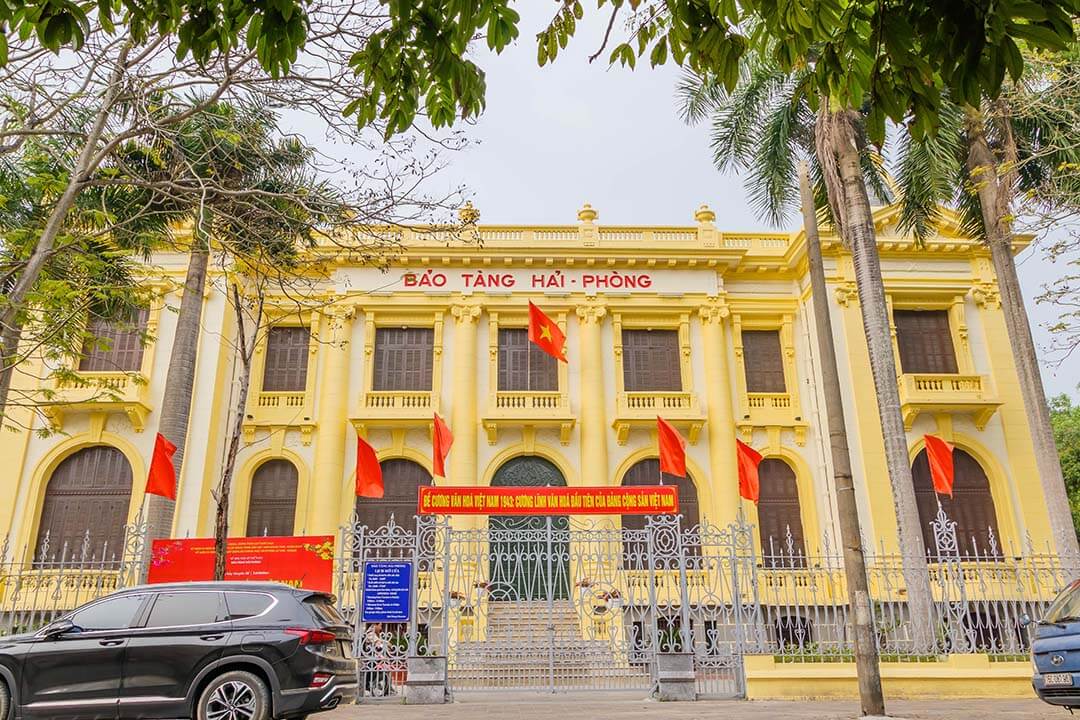
Cultural festivals: Hai Phong hosts various cultural festivals throughout the year, including traditional festivals, music performances, and culinary events celebrating local cuisine and traditions. These festivals offer insights into Hai Phong’s vibrant cultural scene.
Maritime activities: Being a port city, Hai Phong offers opportunities for maritime activities such as boat tours, fishing trips, and visits to local fishing villages. It’s a chance to experience the daily life of fishermen and explore the coastal waters.
Accessibility: Hai Phong is easily accessible from Hanoi by road or train, as well as by ferry from Halong City. Its proximity to Halong Bay and Cat Ba Island makes it a convenient base for exploring these renowned natural attractions.
These reasons highlight Hai Phong as a dynamic destination where travelers can immerse themselves in history, enjoy natural beauty, and experience Vietnamese culture in a coastal setting.
Tuy Hoa – The mountain in the heart of the city
Tuy Hoa, located in Phu Yen Province, has a history intertwined with the Champa Kingdom and later Vietnamese settlements. The city’s historical significance is reflected in its ancient monuments and cultural heritage.
Why choose Tuy Hoa for your trip
Mountainous landscapes: Tuy Hoa is surrounded by picturesque mountain ranges, offering opportunities for hiking, trekking, and exploring scenic viewpoints overlooking the city and coastline.
Coastal beauty: Tuy Hoa boasts beautiful beaches along its coastline, including Da Dia Reef, a unique geological formation of hexagonal basalt columns, and Vung Ro Bay, known for its tranquil waters and seafood restaurants.
Nhan tower: Nhan Tower, a Cham temple dating back to the 11th century, is a significant historical and cultural site in Tuy Hoa. The tower’s architecture and intricate carvings reflect the Cham civilization’s influence in the region.
Local cuisine: Tuy Hoa offers delicious seafood dishes, fresh tropical fruits, and specialties like bun ca (fish noodle soup) and banh xeo (Vietnamese savory pancake). Visitors can enjoy these culinary delights at local eateries and markets.
Cultural heritage: Beyond Nhan Tower, Tuy Hoa showcases cultural diversity through traditional festivals, music performances, and handicrafts produced by local artisans. These cultural experiences provide insights into the region’s rich heritage.
Tranquil atmosphere: Compared to larger cities in Vietnam, Tuy Hoa offers a quieter and more laid-back atmosphere, making it an ideal destination for relaxation and enjoying natural landscapes away from crowds.
Water sports and activities: Visitors can engage in water sports such as swimming, snorkeling, and diving in the clear waters of Tuy Hoa’s beaches. Boat trips to nearby islands and fishing excursions are also popular activities.
Accessibility: Tuy Hoa is accessible by road from major cities like Nha Trang and Quy Nhon, as well as by train and air, with connections to Ho Chi Minh City and Hanoi. Its location on Vietnam’s central coast makes it a convenient stop for travelers exploring the region.
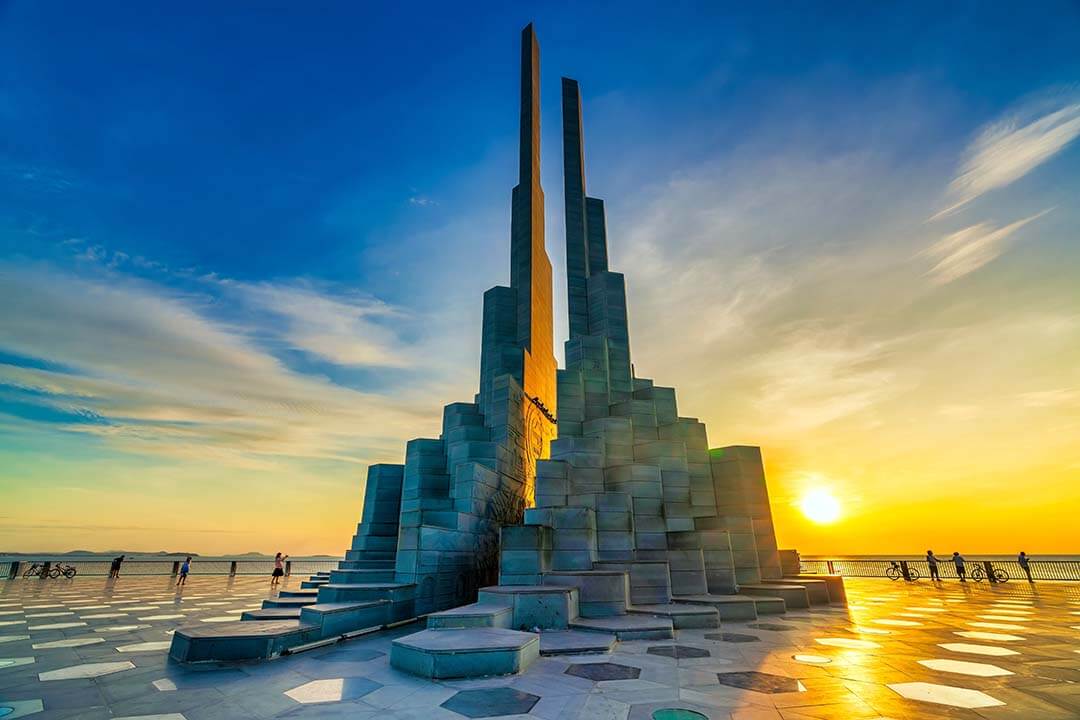
These reasons highlight Tuy Hoa as a destination where travelers can enjoy a blend of natural beauty, cultural heritage, and relaxation in a serene coastal setting in Vietnam.
Vietnam offers a tapestry of destinations, each with its own allure and unique experiences. Whether seeking adventure in the highlands, relaxation on pristine shores, or immersion in local culture, Vietnam promises an unforgettable journey where every destination tells a story of its own. Visit Vietnam Travel Tips daily to discover more about Vietnam



Thank you for your sharing. I am worried that I lack creative ideas. It is your article that makes me full of hope. Thank you. But, I have a question, can you help me? https://accounts.binance.info/zh-CN/register-person?ref=WFZUU6SI
Your point of view caught my eye and was very interesting. Thanks. I have a question for you. https://accounts.binance.info/it/register-person?ref=P9L9FQKY
I don’t think the title of your article matches the content lol. Just kidding, mainly because I had some doubts after reading the article. https://www.binance.com/register?ref=IHJUI7TF